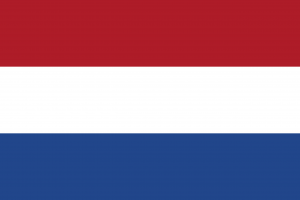Language/Dutch/Culture/Greetings-and-Etiquette
 Հայերէն
Հայերէն Български език
Български език 官话
官话 官話
官話 Hrvatski jezik
Hrvatski jezik Český jazyk
Český jazyk English
English Suomen kieli
Suomen kieli Français
Français Deutsch
Deutsch עברית
עברית हिन्दी
हिन्दी Magyar
Magyar Bahasa Indonesia
Bahasa Indonesia فارسی
فارسی Italiano
Italiano 日本語
日本語 Қазақ тілі
Қазақ тілі 한국어
한국어 Lietuvių kalba
Lietuvių kalba Νέα Ελληνικά
Νέα Ελληνικά Şimali Azərbaycanlılar
Şimali Azərbaycanlılar Język polski
Język polski Português
Português Limba Română
Limba Română Русский язык
Русский язык Српски
Српски Español
Español العربية القياسية
العربية القياسية Svenska
Svenska Wikang Tagalog
Wikang Tagalog தமிழ்
தமிழ் ภาษาไทย
ภาษาไทย Türkçe
Türkçe Українська мова
Українська мова Urdu
Urdu Tiếng Việt
Tiếng ViệtAs a Dutch language teacher, I believe that learning the customs and cultural habits of a country can also help you to better understand the language itself. In this lesson, we will cover the basic Dutch customs related to greetings and etiquette that you should know as a beginner Dutch learner.
Greetings
The Dutch are known for their sense of informality, and this is reflected in the way they greet each other. Here are some common Dutch greetings:
- Hallo - Hello (informal)
- Hoi - Hi (informal)
- Goedemorgen - Good morning
- Goedemiddag - Good afternoon
- Goedenavond - Good evening
- Dag - Goodbye (informal)
It is important to note that the Dutch are not as formal as some cultures when it comes to greetings. Most people will simply say "hallo" or "hoi" when they meet someone for the first time, regardless of their age or social status.
Etiquette
The Dutch are a straightforward and honest people, and they expect the same from others. Here are some basic etiquette rules to keep in mind:
- Always greet people when you see them, even if you don't know them very well.
- Don't be too loud or obnoxious in public, especially in quiet areas such as libraries or museums.
- Respect personal space - the Dutch value their privacy, so don't stand too close to someone unless you're in a crowded place.
- Don't be afraid to speak your mind - the Dutch appreciate honesty and directness.
- When using public transportation, always give up your seat to elderly or pregnant people.
Table Manners
The Dutch are generally not very formal when it comes to table manners, but there are a few things to keep in mind:
- Wait for the host to begin eating before you start.
- Always say "eet smakelijk" (enjoy your meal) before you start eating.
- Don't put your elbows on the table.
- Don't talk with your mouth full.
- When finished eating, place your knife and fork side by side on your plate with the prongs facing down.
Holidays and Celebrations
The Dutch have several holidays and celebrations throughout the year, many of which are celebrated with family and friends. Here are a few important ones:
- Koningsdag - King's Day, celebrated on April 27 to honor the king's birthday.
- Sinterklaas - Celebrated on December 5, this is a traditional Dutch celebration similar to Christmas.
- Kerstmis - Christmas, celebrated on December 25 and 26.
- Nieuwjaar - New Year's Eve is a big celebration in the Netherlands, with fireworks and parties throughout the country.
Conclusion
In conclusion, learning about Dutch customs related to greetings and etiquette can greatly enhance your interactions with native Dutch speakers. By being respectful and following some basic guidelines, you can ensure that you are welcomed into Dutch culture with open arms.
Sources

